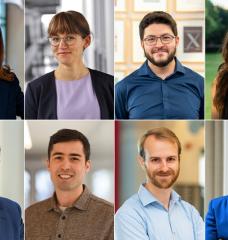
Introduction
The emergence of the metropolis and industrial revolution has intensified the need for massive energy consumption. To meet the limitless energy demand from limited resources, global energy practitioners have come up with a digitally integrated energy system to serve the utility and energy industry, known as the Energy Cloud. As an extension of the fourth industrial revolution, the energy cloud serves as a one-point solution for the power and energy industry. The relevance of the application becomes even more crucial to achieving energy sustainability as the vision to achieve global sustainability successfully transforms from Millennium Development Goals (MDG) to Sustainable Development Goals (SDG) targeted for the Vision 2030.
Energy Digitization and the Road to Sustainability
The current utility market requires innovation and simplification more than ever. This competitive trend emerges from the need of incredible agility to reduce risks, overcome operational challenges, and acquire business opportunities for R&D and sustainable growth.
The environmental sustainability can be ensured by adopting energy digitization at the state and regional level. The holistic approach can be improved by aligning the climate action goals from the Paris Climate Accord of the United Nations Framework Convention on Climate Change (UNFCC) and Vision 2030 of the United Nations. Both of the platforms have a common objective: to attain sustainability. As a whole, the world has failed to decouple financial growth from the increasing use of energy and emission growth. For instance, for every 1% growth in global GDP, there has been approximately 0.5% increase in CO2 emission and 0.4% increase in resource optimization. Environment pollution and system loss will result in 8 billion tons of global demand and supply gap of natural resources equivalent to a $4.5 trillion loss in economic growth by 2030.
To counter the changes, the digital initiatives offer an immersive potential to help decarbonize the global economy through digitization of the energy cloud. The alternative use of energy cloud can help avoid the environmental disasters. Some of the key facts are:
- Digitization of energy cloud can avoid an estimated 26 billion metric ton (MT) of GHG emissions from 2016 to 2025:
- Electricity – 15.8 billion MT
- Logistics – 9.9 billion MT
- Automotive industry – 540 million MT
This amount is equivalent to the CO2 emitted by Europe or USA more than five times in the referred timeframe. By 2025, this would amount to 8.5% of global GHG emissions.
- In the electricity sector, digitization through smart asset planning and management, and universal integration of energy storage can save around 8.8 billion MT of CO2 emissions by 2025, bringing another $418 billion worth value addition to the economy.
The ultimate objective of the digitization process is to provide a safe, affordable and reliable energy source to the industry and customers. The process directly targets and benefits the SDG goals for Vision 2030, i.e., clean water and sanitation, affordable and clean energy, sustainable cities & communities and climate action. Even the digitization process helps to build resilient infrastructure, foster innovation, and promote inclusive and sustainable growth for the industries. Specially, it encourages the developing countries to promote innovation and R&D to upgrade technological capabilities of industrial sectors by 2030. The digitization process will help meet the targeted goals within the referred timeframe. Some of the key factors that will be directly affected by the energy cloud are summarized below:
Goal 6 (Clean Water and Sanitation)
- Help provide water to the 663 million people without access to improved drinking water.
- Help provide clean (non-fecally contaminated) water to at least 1.8 billion people worldwide.
- Meet the water scarcity that affects more than 40% of the global population.
- Provide a solution for the water used for irrigation purpose that includes approximately 70% of groundwater extracted from rivers, lakes, and aquifers.
- Achieve universal and equitable access to safe and affordable drinking water for all by 2030.
Goal 7 (Affordable and Clean Energy)
- Reduce the use of carbon-intensive energy (accountable for 60% of total GHG emissions) to battle the long-term climate challenges.
- Provide universal electricity access, as 25% of the global population still lacks access to modern electricity.
- Increase the share of renewable & clean energy in the global energy mix by 2030.
- Achieve and expand energy and utility infrastructure for modern and sustainable energy services by 2030.
Goal 11 (Sustainable Cities and Communities)
- Help accommodate the 60% of the world’s population in the urban areas by 2030.
- Provide better living condition for the 828 million people living in the slums.
- Help reduce the 60-80% of the total energy consumption and 75% of carbon emission from the cities.
- Help reduce the ever-increasing pressure on freshwater supplies, and sewage systems.
- Help improve living condition and public health interrupted by rapid urbanization.
- Support necessary economic, social and environmental links between urban, peri-urban and rural areas by proposing strengthened national and regional development planning.
- Bolster the support for least developed countries by re-engaging financial and technical assistance to build resilient buildings.
Goal 13 (Climate Action)
- Help keep the global temperature ‘well below’ 2° Celsius.
- Deploy major institutional and technological instruments conducive to reduce global warming.
- Strengthen resilience and adaptive capacity to climate-related hazard and natural disasters.
- Provide improved education, increased awareness and institutional capacity on climate change mitigation, adaptation, early warning, and impact reduction.
The digitization process, if efficiently utilized, can be translated into one of the most disrupting technologies to shape multiple goals of SDG. It is high time we merge the mutually complementing platforms to realize the unfathomable growth of the energy industry and integrate it with the SDG Goals to welcome the edge of global change by 2030.






